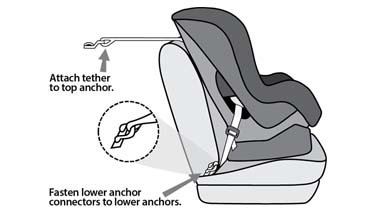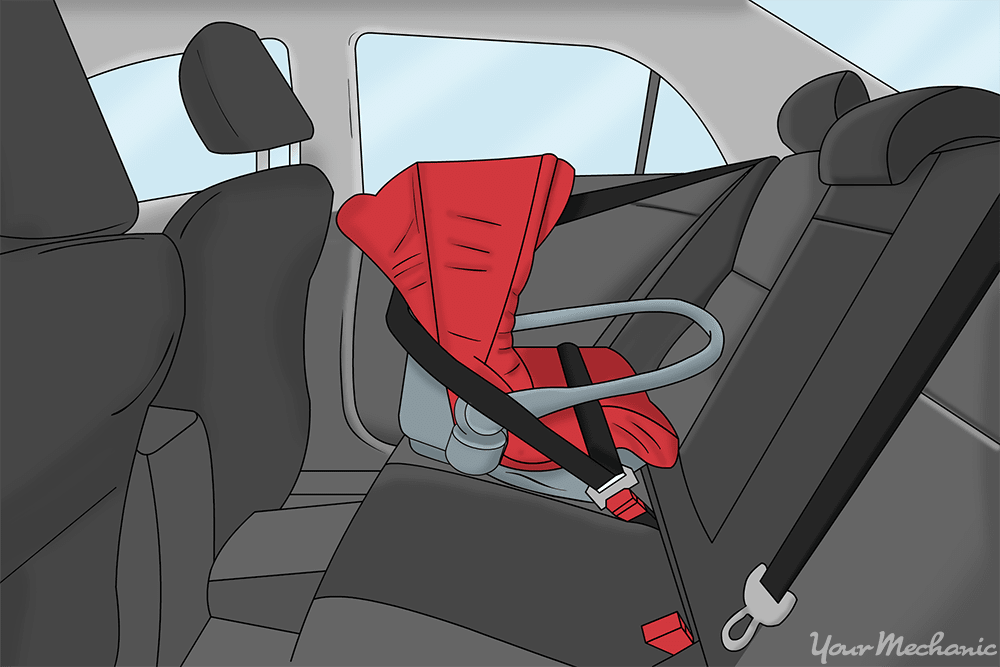Intro-
Child car seat installation is crucial for ensuring your child’s safety on the road. As a responsible parent, it’s essential to understand the proper steps to securely install a car seat. Don’t worry, I’ve got you covered! In this article, I’ll walk you through the process of child car seat installation, making it easy and stress-free.
Installing a car seat may seem like a daunting task, but with a little guidance, you’ll have it done in no time. I’ll provide you with step-by-step instructions, helpful tips, and important safety guidelines to ensure your child’s car seat is securely and correctly installed. So, let’s dive in and make sure your little one is riding safely and comfortably.
Ready to become a car seat installation expert? In the following paragraphs, we’ll discuss the various types of car seats, the correct installation techniques, and address common concerns parents may have. So, grab a cup of hot cocoa and let’s start this journey towards creating a safe and secure traveling experience for your precious cargo!
Installing a child car seat properly is crucial for your child’s safety on the road. Follow these steps to ensure a secure installation:
- Read the car seat manual and your vehicle’s manual.
- Choose the right seat for your child’s age and weight.
- Place the car seat in the back seat.
- Secure the seat with either the vehicle’s seat belt or LATCH system.
- Check for a tight fit and ensure the seat doesn’t move more than an inch in any direction.
Remember, a properly installed car seat can save lives!

Source: healthychildren.org
Child Car Seat Installation: Ensuring Safety on the Road
As parents or caregivers, our topmost priority is the safety and well-being of our children. This is especially true when it comes to traveling in a vehicle. Ensuring that your child is properly secured in a car seat is crucial for their safety. In this comprehensive guide, we will delve into the importance of child car seat installation, the different types of car seats available, and step-by-step instructions on how to correctly install and use them.
The Importance of Child Car Seat Installation
Motor vehicle accidents are one of the leading causes of injuries or fatalities among children. However, the correct use of car seats significantly reduces the risk of injury or death. According to studies, using a car seat reduces the risk of fatal injury by up to 71% for infants and 54% for toddlers.
Child car seat installation provides numerous benefits, such as:
- Restraining the child during sudden stops or impacts.
- Preventing the child from being ejected from the vehicle.
- Distributing crash forces across the strongest parts of the body.
- Protecting the child’s head and neck.
By understanding and implementing proper child car seat installation, you can ensure optimal protection for your child during car travel.
Types of Car Seats
When it comes to child car seat installation, it’s essential to choose the right type of car seat for your child’s age, weight, and height. Here are the different types of car seats available:
1. Rear-Facing Car Seats
Rear-facing car seats are suitable for infants and young toddlers. They provide excellent support for the head, neck, and spine, reducing the risk of injury in case of a frontal impact. Pediatricians recommend using rear-facing car seats until the child reaches the maximum weight or height limit specified by the manufacturer.
Benefits of rear-facing car seats:
- Offers the best protection for infants and young toddlers.
- Reduces the stress on the neck and spinal cord during a crash.
- Provides more legroom for the child.
- Allows for a gradual transition to a forward-facing car seat.
2. Forward-Facing Car Seats
Forward-facing car seats are suitable for older toddlers and young children. These seats have a harness system that restrains the child and distributes the crash forces across the body. It is important to use a forward-facing car seat with a built-in five-point harness until the child outgrows the weight and height limits set by the manufacturer.
Benefits of forward-facing car seats:
- Provides protection for children who have outgrown rear-facing car seats.
- Offers a comfortable seating position for older toddlers and young children.
- Securely restrains the child during sudden stops or impacts.
- Easy access for parents or caregivers to safely buckle and unbuckle the child.
3. Booster Seats
Booster seats are used for older children who have outgrown their forward-facing car seat but are still too small to use a seat belt alone. These seats elevate the child’s seating position and help position the seat belt correctly over the child’s body. Booster seats come in two types: high-back boosters and backless boosters.
Benefits of booster seats:
- Elevates the child’s seating position for a better seat belt fit.
- Provides additional height, allowing the seat belt to cross the strongest parts of the child’s body.
- Offers a transition from car seat to seat belt use.
- Ensures the seat belt lies low on the hips and crosses the shoulder without touching the neck or face.
4. All-in-One Car Seats
All-in-one car seats, also known as 3-in-1 or convertible car seats, are designed to accommodate children in different stages. They can be used as rear-facing seats for infants, forward-facing seats for toddlers, and later converted into booster seats for older children. These versatile seats are a cost-effective option for parents, as they can be used throughout the entire duration of a child’s car seat needs.
Benefits of all-in-one car seats:
- Eliminates the need to purchase multiple car seats as the child grows.
- Provides flexibility and adaptability to suit the child’s changing needs.
- Offers a long-term solution for car seat safety.
Key Takeaways: Child Car Seat Installation
- Properly install the car seat to ensure your child’s safety.
- Read and follow the car seat manufacturer’s instructions carefully.
- Choose the right type of car seat based on your child’s age, weight, and height.
- Position the car seat in the back seat of the vehicle.
- Secure the car seat tightly using the seat belt or LATCH system.
Frequently Asked Questions
Installing a child car seat can be a daunting task, but it’s crucial for your child’s safety. Here are some commonly asked questions about child car seat installation:
1. How do I choose the correct car seat for my child?
Choosing the right car seat for your child is essential for their safety. Consider your child’s age, height, and weight to ensure the seat is appropriate for them. Always refer to the car seat manufacturer’s guidelines and follow your local laws or regulations.
When selecting a car seat, also consider the type of car you have. Not all car seats are compatible with every vehicle, so it’s important to check for compatibility before making a purchase. Additionally, prioritize seats that are easily adjustable, provide proper head and neck support, and have a high safety rating.
2. How should I install a rear-facing car seat?
Installing a rear-facing car seat can be a bit tricky, but it’s crucial for your child’s safety. Start by reading the car seat instruction manual thoroughly, as installation instructions may vary between models. Generally, you’ll need to use either the seat belt or the lower anchors to secure the car seat.
Once you’ve securely attached the car seat with either the seat belt or lower anchors, ensure that the seat is reclined at the correct angle. This angle is usually indicated in the car seat’s manual and ensures your child’s head won’t slump forward. Finally, give the car seat a firm tug to ensure it’s properly secured and doesn’t move more than an inch in any direction.
3. Can I install a forward-facing car seat using the lower anchors?
Yes, it’s typically safe to install a forward-facing car seat using the lower anchors. However, always consult the car seat’s manual to confirm compatibility with the lower anchors. Follow the manufacturer’s instructions precisely, as improper installation can compromise your child’s safety.
When using the lower anchors, make sure the car seat is secured tightly. You might need to apply some force or use a locking clip to ensure a snug fit. Additionally, ensure that the seat belt or harness straps are appropriately positioned and sufficiently tightened.
4. When should I transition my child from a car seat to a booster seat?
Children should remain in a car seat until they outgrow the maximum height and weight limits set by the manufacturer. Once they outgrow these limits, it’s time to transition to a booster seat. Typically, this occurs when a child is around 4 to 7 years old and weighs between 40 and 80 pounds.
Remember, it’s crucial to follow the specific guidelines provided by the car seat manufacturer. Avoid transitioning to a booster seat too soon, as it may compromise your child’s safety in the event of a crash.
5. How do I properly secure my child in the car seat?
Properly securing your child in a car seat is vital for their safety. Start by adjusting the harness straps to the appropriate height. The straps should be at or just below your child’s shoulders for rear-facing seats and at or just above the shoulders for forward-facing seats.
Tighten the straps so that they are snug on your child. You should not be able to pinch any excess material between your fingers. Additionally, ensure that the chest clip is positioned at armpit level to secure the harness properly. Remember, these adjustments may vary depending on the specific car seat model, so always consult the manufacturer’s instructions.

Source: cloudinary.com
How to properly install a child’s car seat
Summary
Installing a child car seat correctly is essential for keeping kids safe in the car. Here are the key points to remember:
1. Choose the right seat: Pick a car seat that matches your child’s age, weight, and size.
2. Read the instructions: Follow the manufacturer’s guidelines carefully to install the seat correctly.
3. Secure the seat: Make sure the car seat is tightly strapped and doesn’t move more than an inch.
4. Positioning matters: Rear-facing seats for babies should be placed in the back seat, and older kids can switch to forward-facing seats.
5. Regular checks: Regularly inspect your car seat installation to ensure it remains secure and meets safety requirements.
Remember, proper installation of a child car seat can make all the difference in protecting your little passengers on the road.
